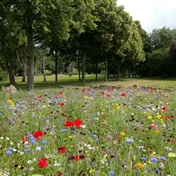Amid the highest recorded pollen counts in history, Health24 will be bringing you exclusive pollen count updates courtesy of the UCT Lung Institute's Allergy and Immunology Unit.
Here are the major city updates for 4 December:
Cape Town (Western Cape)
Grasses were low. Low trees included kareeboom (Rhus) gum (Myrtus) and olive (Olea). Low weeds included the types slangbos (Stoebe) Pellitory-of-the-wall (Parietaria) and mugwort (Artemisia). Moulds were low.
Count: 13 (moderate)
Johannesburg (Gauteng)
Low levels of grass were detected. Tree levels were low and the types detected were jacaranda (Fabaceae), Acacia and gum (Myrtus). Low weed levels included the types English Plantain (Plantago) Euphorbia and Pellitory-of-the-wall (Parietaria). Moulds were very low.
Count: 5 (low)
Pretoria (Gauteng)
Grasses are low but increasing. Low tree levels were seen and the types detected were kareeboom (Rhus/Searsia), yellowwood (Podocarpus spp), gum (Myrtus) and white stinkwood (Celtis). Weed levels were low and included English Plantain (Plantago), Pellitory-of-the-wall (Parietaria) and ferns (Polypodiaceae). Moulds were low.
Count: 8 (moderate)
Bloemfontein (Orange Free State)
Grasses were low, low tree concentrations included olive (Olea), Acacia and sneezebush (Buddleia). No weed pollen was detected and moulds were low.
Count: 19 (moderate)
Kimberley (Northern Cape)
Grass levels are low but increasing. Low tree levels included olive (Olea spp) and kareeboom (Rhus/Searsia). Weeds detected were slangbos (Stobe spp), the daisy family (Asteraceae) aloe (Asphodelaceae) and goosefoot (Chenopod) and these levels were low. Low mould levels were seen with small spikes for Basidiospores following rain.Count: 9 (moderate)
Durban (KZN)
Grass levels were low. Low tree levels included olive (Olea), yellowwood (Podocarpus spp), jacaranda (Fabaceae) and white mulberry (Morus). Weed levels were low and the types detected were sedges (Cyperus) the daisy family (Asteraceae), ragweed (Ambrosia spp), and ferns (Polypodia). Moulds were low but Epicoccum increased to significant levels after rain.Count: 5 (low)
Port Elizabeth (Eastern Cape)
Grasses levels were low. Low tree levels included the types olive (Olea), gum (Myrtus)waxberry (Morella) and the Anacardiaceae family (Mango, Pepper, Pistachio, Cashew). Weed levels were low and the pink or carnation family (Caryophyllaceae), heather (Erica), the Amaranthaceae family which includes saltbush sedges (Cyperus) and the daisy family (Asteraceae) were detected. Moulds were low.
Count: 5 (low)
See the full report HERE.
Reference ranges:
Overall, Trees, Grasses and Weeds all use the same values (grains per cubic metres of air)
Overall count is the daily average of pollen grains per cubic metres of air (trees plus grasses plus weeds).
In partnership with the UCT Lung Institute's Allergy and Immunology Unit.
As the pollen problem worsens, precise and expanded monitoring becomes even more essential. And here's how you can help
Image: Peter Zelei Images




 Publications
Publications
 Partners
Partners











